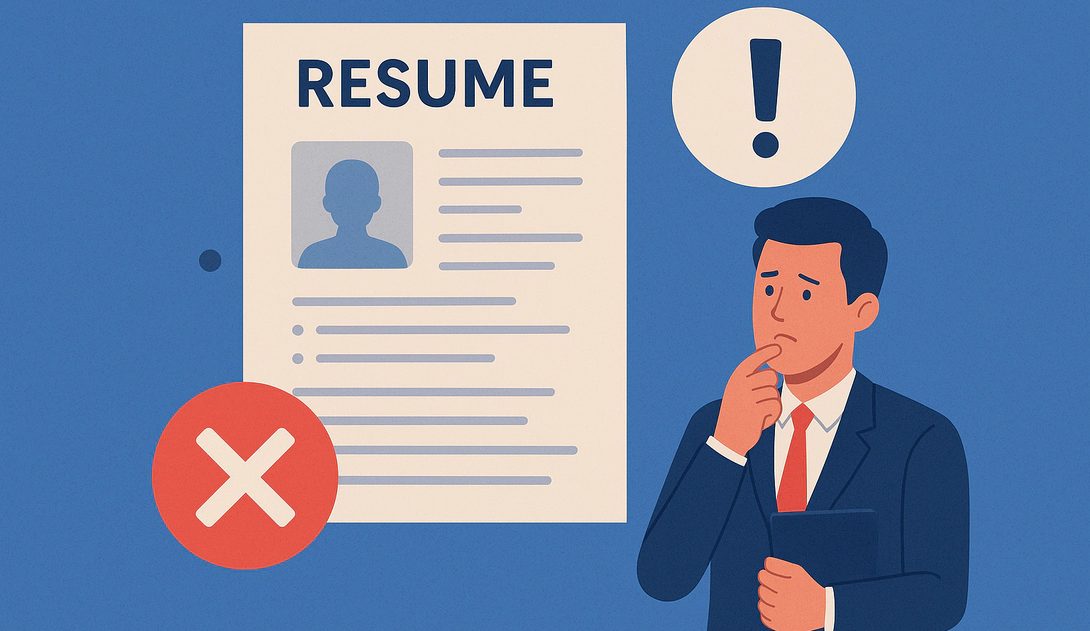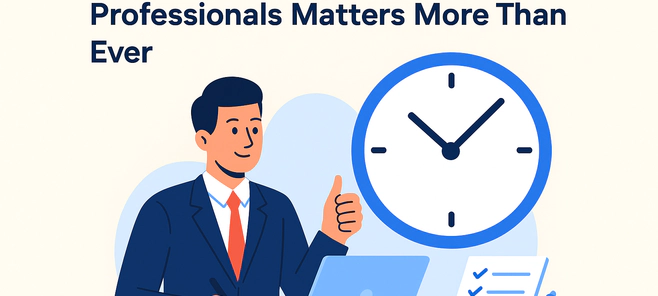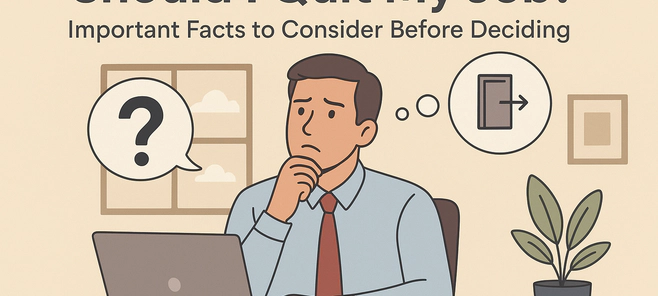There is a proverb that the first impression is the best impression. When we apply for a job, our resume works as the first impression. Recruiters do not know us personally, so they judge us by the way we present ourselves in writing. A resume is not only a document, but it is the key to entry for the first stage of any job recruitment process. But very often, we make common resume mistakes that can completely ruin our chances of being shortlisted. A small spelling error, wrong formatting, or unnecessary detail can send our resume straight to the rejection pile.
Silly mistakes cost you big
In a competitive market, it is very tough to secure a job. Thousands of people apply for a single position. Recruiters have very little time to sort through resumes. When they find any type of mistake, especially common mistakes, they often reject the resume immediately.
Just think about it: you work hard for the job, you prepare a CV, you take a lot of preparation, but for a simple reason, your CV is rejected. All of your hard work, planning, and dedication can be wasted within a few seconds because of common resume mistakes. I hope you can understand the cost of these small errors.
10 Worst Resume Mistakes to Avoid
- Missing the Cover Letter
Many candidates only submit their resume, but a cover letter is an important part of a job application. If the job specifically mentions submitting only a resume, you can skip it. Otherwise, always provide a cover letter to explain your motivation and suitability for the position.
- Choosing the Wrong Template
Some candidates just copy and paste resume templates without checking whether it is appropriate for the industry. Choosing the wrong template can make your resume look unprofessional. The design, font, and structure should match the expectations of the job you are applying for.
- Using One Resume for All Jobs
When you use a general resume for every job application, it does not fulfill recruiters’ expectations. They cannot see a specific connection between the job requirements and your resume. For this reason, your chances of rejection increase significantly.
- Grammar and Spelling Mistakes
Sometimes candidates build a good resume, but they don’t check for grammar. Mixing present and past tenses or making spelling mistakes can make your resume a bad resume example. Always proofread your CV carefully to avoid these errors.
- Poor Alignment and Formatting
Your skills, achievements, and experience may be strong, but if the formatting is inconsistent, it reflects poorly. Using multiple fonts, misaligned bullet points, or mismatched font sizes shows lack of attention to detail, which is critical to recruiters.
- Including Irrelevant Information
Some candidates think that adding more information makes their resume more valuable. In reality, excessive or irrelevant information distracts the recruiter and reduces the impact of your key qualifications. Keep your resume concise and focused.
- Using an Unprofessional Email Address
Sometimes, fresher’s use unprofessional email addresses, such as cooljohn@gmail.com . Additionally, not following proper contact formatting can prevent recruiters from reaching you. Always use a professional email address and include accurate contact information.
- Submitting a Resume That is Too Long or Too Short
Some candidates submit five or six-page resumes, while others submit only a one-pager. Common practice is two or three pages, depending on experience and industry. Avoid making your resume too long or too short.
- Ignoring Submission Guidelines
Many candidates fail to fill out job application forms properly. When sending resumes by email, some don’t fill the subject line correctly or fail to mention the position name. Recruiters often reject these resumes immediately during sorting.
- Not Updating Your Resume Regularly
We often create a resume and then forget to update it. Your experience, skills, training, and achievements should be updated regularly. This demonstrates your dedication and ensures your resume reflects your current qualifications.
How to Avoid These Common Resume Mistakes
Before applying strategies to avoid mistakes, you need to understand how recruiters review resumes.
How Recruiters Review Resumes
Receiving the Resume: HR recruiters first receive resumes either in hard copy or online. For hard copies, the envelope and addressing at the top are important. Improper presentation can lead to rejection.
For online submissions, recruiters check the subject line and position name carefully. If you fail to mention it properly, your resume may be rejected. Many organizations also use online systems with custom resume templates. If the form is not filled correctly, it may result in automatic rejection.
First Sorting: After receiving resumes, recruiters sort them quickly. Sometimes, two or three team members are involved. In this first sorting, they check the template, structure, and common mistakes. Candidates who make silly errors are rejected at this stage. They may also check whether basic requirements, like experience, are met.
Second Sorting: In this stage, recruiters review resumes more deeply. They check whether your skills, experience, and responsibilities match the job description.
Third or Final Sorting: After the second stage, recruiters identify the best candidates for interview calls. They look for experienced, skilled, and capable candidates. Now that you know the sorting process, you can understand recruiters’ expectations and avoid mistakes.
Steps to Minimize Resume Mistakes
Understand the Job
To create a perfect resume, first thoroughly review the job circular. Note down important points and keywords. Make a list of requirements to understand the expectations of recruiters.
Once you understand the job, you can decide whether to include a cover letter, choose the right template, and select a suitable theme for your resume.
Research the Organisation
Visit the organisation’s website and collect information about their values, mission, vision, services, and history. You can also gather informal information about their work culture and management philosophy. This knowledge helps you write a strong career objective, cover letter, or message.
Check Grammar and Spelling
Grammatical errors can make your resume look unprofessional. Use tools like Grammarly or other AI-based grammar checkers.
Spelling mistakes are normal, but double-check your work. Remember, some words have different spellings in different regions, so maintain consistency according to your country.
Review Format and Alignment
Use one or two font styles and sizes consistently. Check bullet points, numbering, and margins. Submit online resumes in PDF format to maintain alignment and formatting. Print a draft copy to ensure the colors and layout appear correctly in hard copy.
Revise with Experts
Review your resume with seniors, peers, or industry experts. Many consultancies offer resume review services. Expert feedback can help you avoid common resume mistakes.
Submit Carefully
For hard copy submission, follow standard practices. Attach your picture if required, and ensure the envelope is addressed correctly. Improper envelope handling has caused many resumes to be rejected.
Online Submission Tips
Before online submission, ensure the subject line is correct, the email body is clear, and the documents are properly attached. Submit the resume in the correct file type and mention the job position name specifically. Recruiters often search their inbox by position name, so failing to do this can reduce your chances of being shortlisted.
Add your signature in the correct format if required.
Recruitment is an important process for any organization. HR teams work hard to sort the best resumes, but they have very little time for each. If you make silly mistakes, your chances of getting an interview call are very low. Don’t make yourself a bad resume example. Focus on attention to detail and avoid these common resume mistakes.





